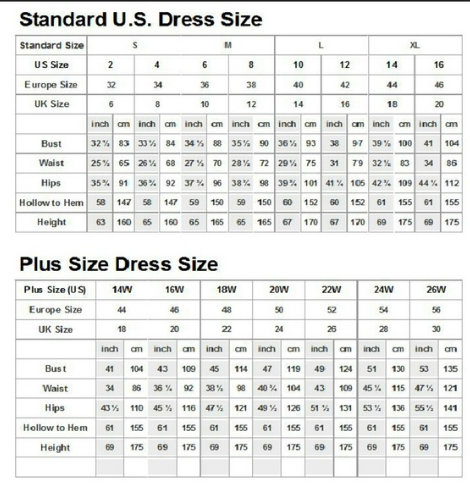Knowing Your Stats
Posted by Candice Evangeline on 2017 May 17th
When it comes to online shopping, knowing your stats is very important, since sizes vary from store to store and from country to country. Because of this, it's important to use size charts over letter and number sizes. When it comes to shopping in both online and physical stores, it's important to remember that sizes are meant to be a guide, so that you know where to start. Accepting that your closet can (and will) range in sizes, is the second step to a body positive wardrobe. Remember, your size is in no way a reflection of your self worth. Once we detach from the need to wear a specific size, we can begin to wear things that fit well, no matter what is written on the label.
If you are an inbetweenie, which is typically a size 12-16, you may need to cross over into plus size. It's really important that we detach the negative stigma around the term plus size. It's not a dirty word, it's just a category, or another guide. Let it guide you to the right fit.
Another thing to keep in mind is a lot of mainstream stores are based on Jr. blocks. These usually have odd numbering (1,3,5 instead of 2, 4, 6). This means the clothes are meant for teens. These stores fit small and the XL is usually a 10/12. See below comparison.


In case you missed the Instagram story, I've summed it up here for you, step by step.
- Grab a friend and a tape measure (or a long string and a ruler)
In order to get the most accurate measurements, do not attempt this alone. When we measure ourselves, fingers and an inability to get the right angle can cause over measurement.
2. Wear something light
Put on a swimsuit or a sports bra and panties. Anything padded will cause over measurement.
3. Take the measurements
Jot this down on a piece of paper before you begin:
BUST:
WAIST:
HIP:
Wrap the string or tape measure around the above points, starting at the bust. Hold the string/tape snug, but not so snug that it is creating additional lumps and bumps. Also be sure to hold it a bit more tightly if the string/tape is slipping.
Then jot down each number as you go.
Bust: Widest part of the bust, right across the nipple point.
Waist: Smallest dip in the torso, usually right above the navel.
Hip: Largest part of the booty, not where your hip bone is, that is your high hip (which most size charts don't note).
4. Repeat for accuracy
The old saying goes: Measure twice, cut once. In other words, mistakes happen and its better to be safe than sorry.
If using a string and ruler:

If you happen to have a meter stick, this will make your life easier, but a ruler will work too. Be sure to take the measurements at least 3 times for accuracy. Also, be sure that you are not using a string that is stretchy - the kind used to tie meat works the best, but even some gift wrap ribbon will do the trick. Don't use anything too wide or you'll end up over measuring. Stick to something less than 1/4".
Mark the point where the end of the string meets the measurement point. Using different coloured highlighters is a great option. This way, you can mark each point with a different colour to avoid confusion.
Now, you will essentially measure the string, from the end used as the start point, to your measurement point. Rulers are 12", so you will have to do some addition. This is where miscalculation can happen, but doing it a few times should get you an accurate measurement.

Now that you have your measurements...
You will be able to determine your approximate size, based on the below chart.

Next, we will be using these measurements to determine body type. No, I don't use fruit, and I also discuss other factors to consider. Like so many things in this world, your body shape is certainly not one size fits all. Some trial and error is necessary because the human form is very complex. Time and patience are necessary in finding what works, but will save you both in the future. Using this guide is also going to help you start determining what stores work well for you too. I pretty much shop at 3 places. It took a lot of literal self-reflection to get to this point.
Knowing your body type, like knowing your approximate size, will work as a guide while you shop. When you know what specific styles will work well for your shape, you will start to gravitate to those first, making your life easier and shopping fun again. Then, if there's something you REALLY like, but know it might not be the greatest, you can take it into the fitting room with the right mindset. For example: collared shirts with buttons are terrible on me. Same with silky blouses, they just don't sit on my large bosom very well. So, unless I see a really great print or a detail that I've just gotta try, I don't bother. And, if I do, I go in knowing that it may not work, aka hope for the best, but expect the worst. Sometimes the odd thing will work, and this is why I use the word GUIDE over RULE. Rules are restrictive and the human spirit is simply too free for that.
Fashion should be fun! And when you begin to know the shapes that work, you can then apply colour, pattern, texture and shine to show your personality. When you find that dress, blouse or pants that feel like they are made for you, that's where you start to not only look great, but feel great too!
See you on Friday!
